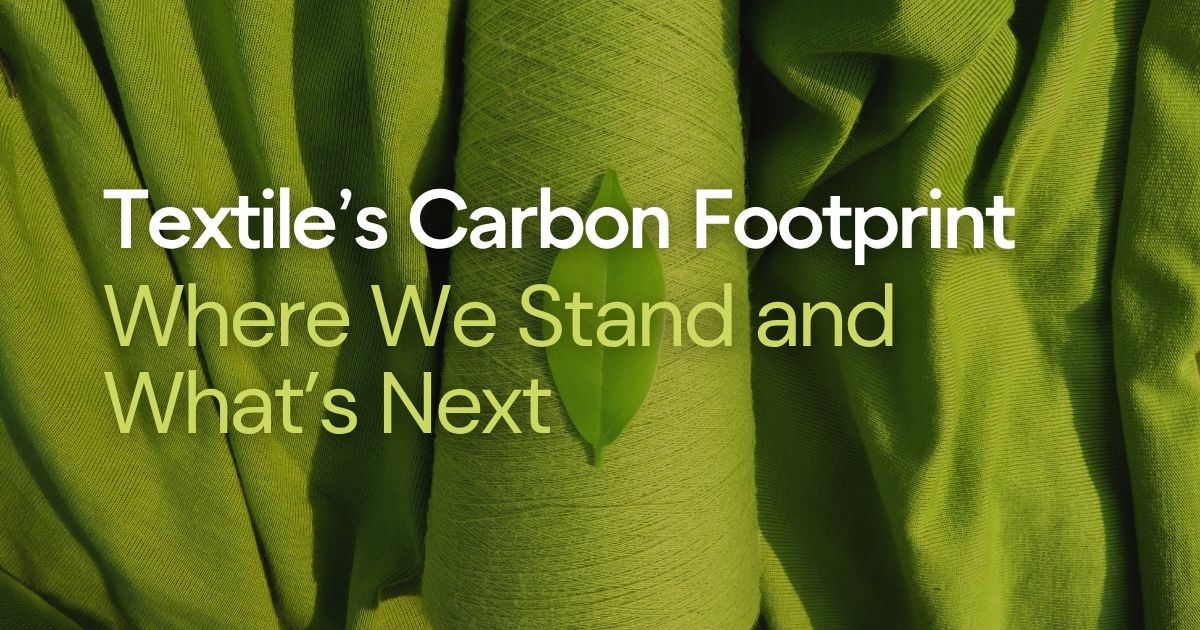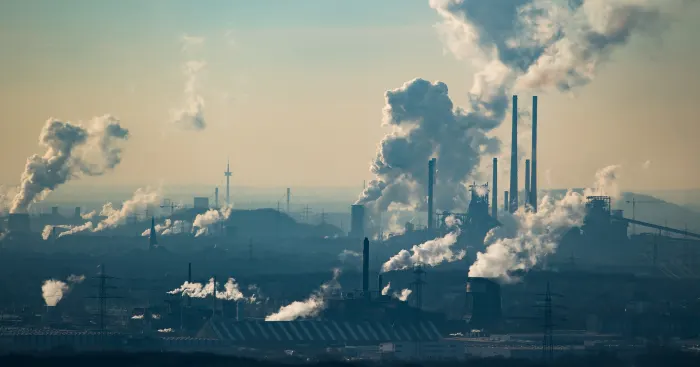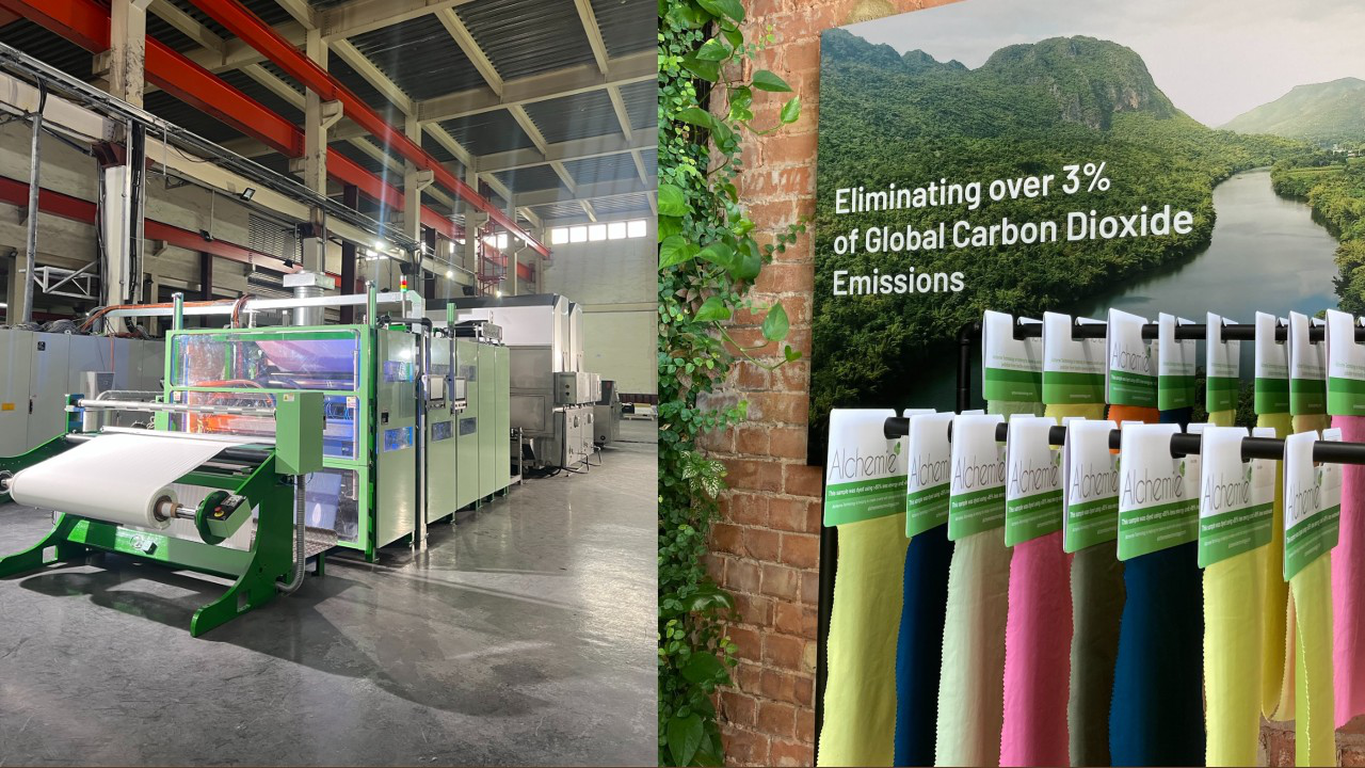
The textile industry has become one of the world’s fastest-growing sectors. With demand for textiles continuing to grow, this is expected to escalate climate challenges. From raw material production to garment finishing, every stage of textile production generates carbon emissions (CO2), especially textile dyeing.
Where We Stand on Textile’s Carbon Footprint
The fashion industry is facing an urgent reckoning, traditional textile dyeing is one of the most resource-intensive and polluting stages in the supply chain, and the time for incremental change has passed. We take a clear stance because the choices made in dyeing today will determine the environmental legacy of textiles tomorrow. By confronting the inefficiencies and hidden impacts of outdated methods, we can shift the industry toward solutions that drastically reduce water use, energy consumption, and chemical pollution, without compromising the precision or quality that fabrics demand. Standing on this side is about aligning technological innovation with environmental responsibility, ensuring that every drop of dye contributes to progress rather than pollution.
Where we stand on textile’s carbon footprint currently is that, due to the persistent use of these outdated methods, dyeing and finishing is responsible for 3% of global CO2 emissions every year. If these methods continue to be used, forecasts of dyeing and finishing accounting for 10% of global CO2 annually by 2050 will be surpassed. Particularly considering a growing global population and demand for textiles being on the rise.

Carbon emissions from fashion brands (Schulze, L., 2019).
What’s Next for Textile’s Carbon Footprint
Global demand for textiles is forecast to increase by over 60% by 2030. That is what’s next for textile’s carbon footprint if outdated, wet dyeing methods continue to be used. Causing carbon emissions to rise sharply, threatening international climate commitments like the Fashion Industry Charter for Climate Action of achieving carbon neutrality by 2050. Exposing brands and textile manufacturers to reputational, regulatory, and financial risks as sustainability expectations intensify, while also straining natural resources like water and energy. Without a shift toward cleaner, more precise dyeing technologies, the environmental and economic costs of textile production will continue to escalate, while also straining natural resources like water and energy.
New frameworks such as The Double Dividend Protocol (DDP) are beginning to reshape how the industry approaches decarbonisation. The DDP introduces a financial model that incentivises fashion brands to co-fund supplier upgrades, enabling manufacturers to adopt low-carbon technologies that cut emissions and reduce resource use. The operational savings generated through these improvements can then be reinvested into next-generation sustainable fibres creating a cycle that links cost efficiency with environmental progress and driving systemic change across the value chain.
To meet the scale of transformation required, brands must work in partnership with their suppliers and embrace clean-tech innovations that deliver measurable impact. Digital dyeing technologies represent one of the most immediate opportunities to do so. Precision-controlled, near-waterless dyeing systems replace fossil-fuel-intensive wet processes with data-driven, electrified methods that drastically lower energy use and eliminate wastewater. This shift redefines what’s possible for textile production - turning dyeing from one of fashion’s highest-emitting stages into a powerful lever for achieving true decarbonisation and a more sustainable textile future.
Decarbonising Textile Dyeing
We at Alchemie Technology have pioneered digital textile dyeing technologies for over a decade and are redefining fabric colouration. Unlike traditional, wet processes that require power from burning unrenewable energy sources, our full-scale production system Endeavour™ and Novara is fully-electric and offers a dry alternative to textile dyeing and finishing. Through non-contact dye application, and digital precision to control the amount of water and chemistry needed to dye fabrics, we deliver high accuracy, consistent, sustainably dyed fabrics across both natural and synthetic fibres (like cotton and polyester).
 The impact of Alchemie’s solutions go beyond efficiency. At scale, it offers a viable pathway to decarbonising textile dyeing across the global textile industry. Minimising waste, optimising resource use, and addressing the sizable carbon footprint from textile production. For brands under pressure to meet climate targets, adopting clean-tech solutions is no longer just an environmental decision – it’s a strategic one. Not only with our clean tech’s environmental savings but also being able to reduce your textile dyeing production costs by up to 50%.
The impact of Alchemie’s solutions go beyond efficiency. At scale, it offers a viable pathway to decarbonising textile dyeing across the global textile industry. Minimising waste, optimising resource use, and addressing the sizable carbon footprint from textile production. For brands under pressure to meet climate targets, adopting clean-tech solutions is no longer just an environmental decision – it’s a strategic one. Not only with our clean tech’s environmental savings but also being able to reduce your textile dyeing production costs by up to 50%.
Achieving Carbon Neutrality in Textile Dyeing
Despite the continuing rise of textile’s carbon footprint, action is being taken to address the current state and improve carbon emissions within the fashion supply chain, addressing one of the industry’s greatest sustainability challenges.
Frameworks like the DDP are now incentivising brands to accelerate their transition toward more sustainable dyeing methods. At the same time, textile manufacturers have greater access to technologies that enable the production of low-impact, sustainably dyed fabrics - offering a clear alternative to traditional, water-intensive wet processing. This progress demonstrates that a world powered by clean-tech innovations, such as dry, digital textile dyeing, can truly drive the decarbonisation of the textile industry.
By adopting Alchemie’s solutions, you no longer need to accept the status quo. Transition to dry processing for fabric colouration and you can dramatically reduce your carbon footprint of textile production, while supporting you in achieving carbon neutrality in textile dyeing.
Decarbonising textile dyeing to build a sustainable future.
Contact us at enquiries@alchemietechnology.com.